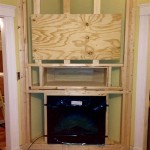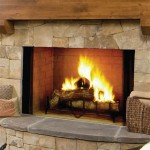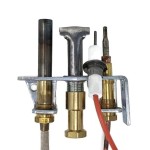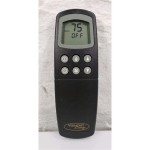```html
Understanding Flueless Gas Fireplaces: A Comprehensive Guide
Flueless gas fireplaces represent a modern approach to home heating, offering an alternative to traditional fireplaces that require chimneys or extensive venting systems. These appliances operate by burning gas cleanly and efficiently, releasing heat directly into the room. The absence of a flue provides several advantages, including simplified installation and increased energy efficiency. However, understanding the technology, regulations, and safety features associated with flueless gas fireplaces is crucial before considering one for a residential or commercial space.
This article aims to provide a comprehensive overview of flueless gas fireplaces, covering their operational principles, benefits, drawbacks, installation considerations, safety standards, and maintenance requirements. The information presented is intended to equip readers with the knowledge necessary to make informed decisions regarding the suitability of flueless gas fireplaces for their specific needs.
How Flueless Gas Fireplaces Work
The core principle behind a flueless gas fireplace lies in its ability to achieve exceptionally clean combustion. This is accomplished through sophisticated burner technology combined with catalytic converters. The fuel, typically natural gas or propane, is burned at a high temperature in the presence of a catalyst, which promotes the complete oxidation of the gas molecules. This process minimizes the production of harmful byproducts such as carbon monoxide (CO) and nitrogen oxides (NOx).
The catalytic converter plays a vital role in ensuring complete combustion. It typically consists of a mesh or honeycomb structure coated with a catalyst material, such as platinum, palladium, or rhodium. These metals facilitate chemical reactions that break down unburned hydrocarbons and convert CO into carbon dioxide (CO2). The result is a cleaner exhaust gas stream that can be safely released into the room without posing a significant health risk.
To further enhance safety, flueless gas fireplaces are equipped with oxygen depletion sensors (ODS). These sensors continuously monitor the oxygen levels in the room. If the oxygen concentration drops below a predetermined threshold, the ODS will automatically shut off the gas supply to the fireplace, preventing the buildup of CO. This feature acts as a crucial safety mechanism in the event of insufficient ventilation.
Although flueless gas fireplaces produce primarily CO2 and water vapor as byproducts, proper ventilation is still essential. The fireplace is designed to operate within a specific range of room sizes and ventilation rates. The manufacturer's instructions will specify the minimum room volume and the required air vent size to ensure safe and efficient operation. Failure to adhere to these guidelines can lead to the accumulation of CO2 and other contaminants, potentially posing health risks.
Advantages of Flueless Gas Fireplaces
Flueless gas fireplaces offer several advantages over traditional vented fireplaces, making them an attractive option for many homeowners. One of the primary benefits is simplified installation. Because they do not require a chimney or flue, flueless fireplaces can be installed in locations where a traditional fireplace would be impractical or impossible. This eliminates the need for costly and disruptive construction work, such as building a chimney or running vent pipes.
Another key advantage is increased energy efficiency. With a traditional fireplace, a significant portion of the heat generated is lost up the chimney. Flueless fireplaces, on the other hand, release all of the heat directly into the room, resulting in higher heating efficiency. This can translate into lower energy bills and reduced environmental impact.
Flueless gas fireplaces also offer greater design flexibility. They are available in a wide range of styles, sizes, and finishes, allowing homeowners to choose a model that complements their existing decor. Furthermore, they can be installed on walls, freestanding, or even integrated into furniture, providing a variety of aesthetic options.
The operational convenience of flueless gas fireplaces is another significant benefit. They typically feature push-button ignition and adjustable heat settings, making them easy to use and control. Some models also include remote controls, allowing users to adjust the flame and temperature from the comfort of their couch.
Finally, flueless gas fireplaces can be a more affordable option than traditional fireplaces, considering the installation costs. The absence of chimney construction or vent pipe installation significantly reduces the overall expense. While the initial purchase price of a flueless fireplace may be comparable to that of a vented model, the reduced installation costs can make it a more budget-friendly choice.
Safety Considerations and Regulations
Despite their advantages, flueless gas fireplaces are subject to strict safety regulations and require careful consideration to ensure safe operation. The key concern is the potential for CO buildup, which can be fatal. For this reason, flueless fireplaces are equipped with ODS systems and must be installed in rooms with adequate ventilation.
Building codes and regulations governing the installation of flueless gas fireplaces vary by region. It is essential to consult with local building authorities and qualified HVAC professionals to ensure compliance with all applicable codes and standards. These regulations typically specify minimum room sizes, ventilation requirements, and installation clearances.
Regular maintenance is crucial for maintaining the safety and efficiency of a flueless gas fireplace. This includes periodic cleaning of the burner, catalyst, and ODS sensor. The manufacturer's instructions will outline the recommended maintenance schedule and procedures. It is important to follow these instructions carefully and schedule professional servicing as needed.
Carbon monoxide detectors are an essential safety measure for any home with a flueless gas fireplace. These detectors should be installed in accordance with the manufacturer's instructions and tested regularly to ensure they are functioning properly. CO detectors provide an early warning of CO buildup, allowing occupants to evacuate the premises and seek medical attention if necessary.
It is also important to educate all household members about the safe operation of the flueless gas fireplace and the potential hazards associated with CO exposure. This includes explaining the function of the ODS system, the importance of proper ventilation, and the symptoms of CO poisoning. Regular safety drills can help ensure that everyone knows how to respond in the event of a CO emergency.
The European Standard EN 449 governs the safety requirements for flueless gas fires. This standard specifies performance criteria for CO emissions, NOx emissions, and other safety-related parameters. It also outlines testing procedures and certification requirements. Manufacturers must comply with EN 449 to sell flueless gas fires in Europe.
In the United States, flueless gas fireplaces are regulated by ANSI Z21.11.2, which is the American National Standard for Unvented Room Heaters. This standard specifies requirements for construction, performance, and safety. It also includes provisions for labeling and installation instructions. Manufacturers must comply with ANSI Z21.11.2 to sell flueless gas fireplaces in the US.
Beyond compliance with industry standards, it is advisable to choose a flueless gas fireplace that is certified by a reputable third-party testing agency, such as CSA International or Intertek. These agencies independently test and certify products to ensure they meet applicable safety and performance standards. Certification by a third-party agency provides an added level of assurance that the fireplace has been rigorously tested and meets the highest safety standards.
In addition to these technical considerations, it is important to be aware of the potential impact of flueless gas fireplaces on indoor air quality. While they produce primarily CO2 and water vapor, they may also emit trace amounts of other pollutants, such as NOx and particulate matter. Individuals with respiratory sensitivities or allergies may be more susceptible to these pollutants. Proper ventilation and regular air filtration can help mitigate these effects.
Choosing the right size of flueless gas fireplace for the room is also important. An oversized fireplace can generate excessive heat, leading to discomfort and potential safety concerns. The manufacturer's instructions will specify the recommended room size for each model. It is essential to select a fireplace that is appropriately sized for the intended space.
Finally, consider the long-term operating costs of a flueless gas fireplace. While they are generally energy-efficient, the cost of gas can fluctuate. It is advisable to compare the operating costs of different models and fuel types (natural gas vs. propane) to determine the most cost-effective option. Regular maintenance can also help optimize energy efficiency and reduce operating costs.
```
Burley Acumen Flueless Hole In The Wall Gas Fire From Direct Fireplaces

Burley Esteem Flueless Gas Stove Fireplace Supers

Ekofires 5520 Flueless Gas Fire Stoves

Eko Fires 6030 White Flueless Gas Stove Direct Stoves

Ekofires 6010 Flueless Gas Stove Flames Co

The Ekofires 5510 Inset Flueless Gas Fire Direct Fireplaces

Flueless Gas Fires Inset Catalytic Wall Mounted Fireplace Warehouse
Burley Environ 4244 Flueless Gas Fire Hot Co

Burley Latitude Flueless Gas Fire From Fireplace Saver

Angel Flueless Fire Designer Gas Fires








